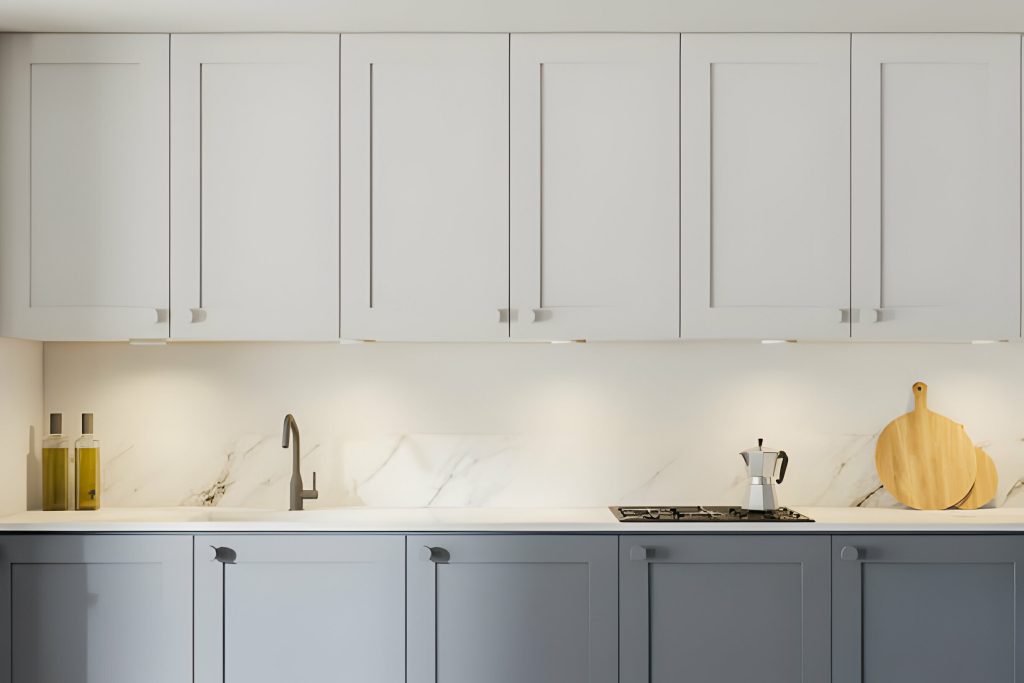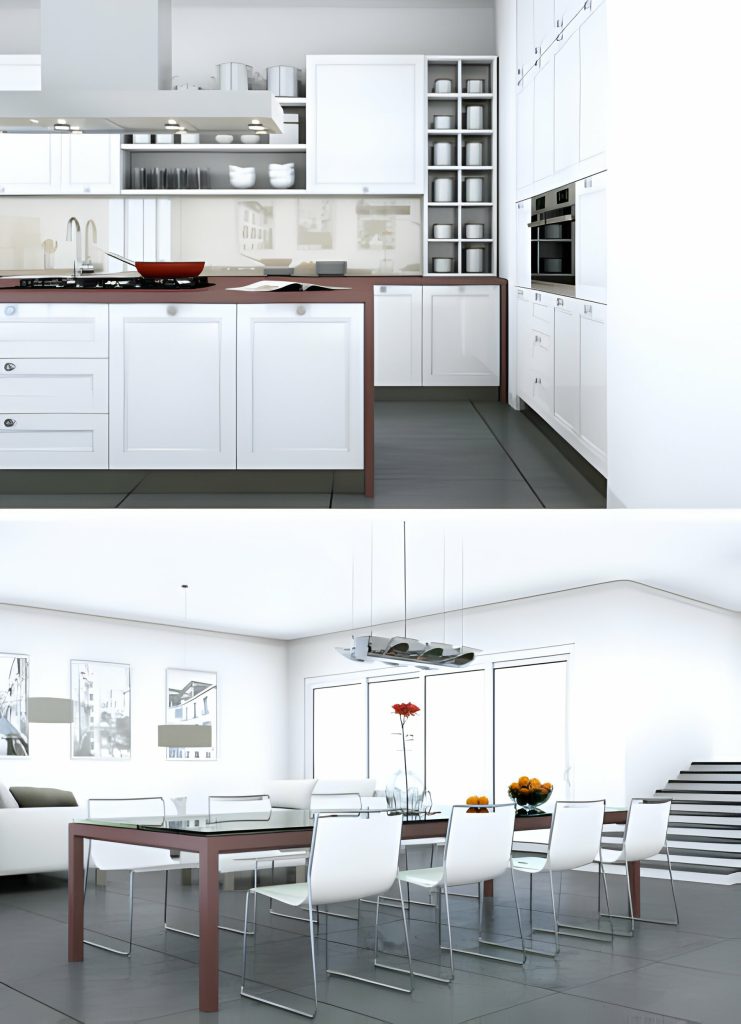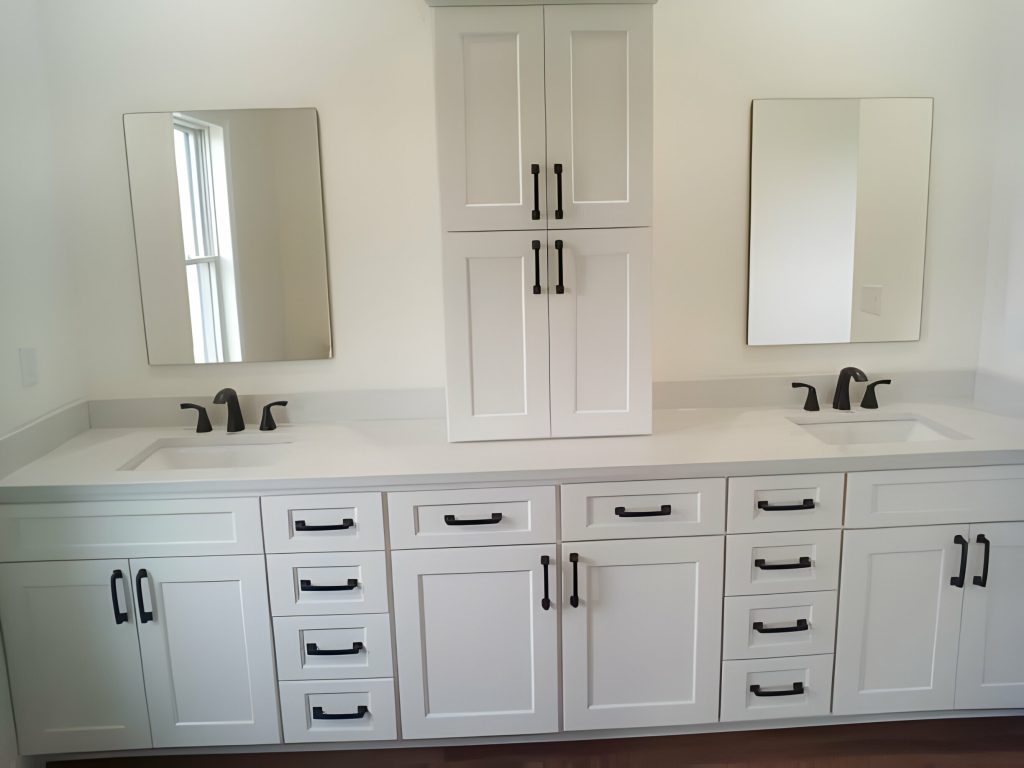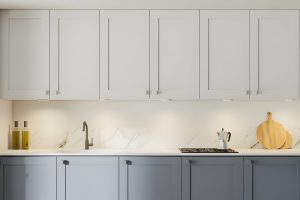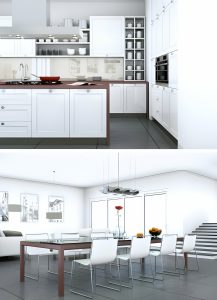If you’re dealing with peeling doors, it’s important to address the issue for both aesthetic reasons and to prevent further damage. Fortunately, repairing thermofoil doors is possible in some cases. By cleaning, sanding, applying adhesive, and trimming small peeling areas, you can restore their appearance. However, for more severe damage, replacing the cabinet doors may be necessary. In this article, we’ll explore whether thermofoil doors can be repaired and provide tips for preventing future peeling.
Common Causes of Thermofoil Door Peeling
The main causes of peeling in thermofoil doors are humidity, steam from appliances, lack of handles, and normal use. To prevent peeling and maintain the quality of your thermofoil doors, there are some preventive measures you can take. First, ensure proper maintenance by regularly cleaning the doors with a damp cloth and avoiding the use of harsh chemicals. Additionally, identifying any underlying issues such as excessive moisture or heat sources near the cabinets is crucial. If you do notice peeling, there are DIY repair techniques available such as sanding the edges and applying adhesive to reattach the thermofoil layer. However, for more extensive damage or for those who prefer professional help, there are also professional repair options available that can fix your thermofoil doors effectively.
Assessing the Extent of Damage
Inspecting the peeling area involves checking for loose edges, bubbles, and discoloration. Start by evaluating the damage and determining the cause of the peeling. Look at the surrounding environment, quality of the cabinets, and installation to identify any contributing factors. Measure the dimensions of the damaged area to ensure proper replacement or repair materials. Once you have assessed the damage and determined the cause, it’s time to choose an adhesive that is heat-resistant and waterproof. Apply the adhesive carefully, ensuring proper adhesion and eliminating air pockets. After pressing down firmly, trim any excess material using a sharp knife or trimmer for a clean finish. By following these steps, you can effectively assess and repair small areas of peeling on your thermofoil cabinets.
Repairing Small Peeling Areas
To effectively repair small areas of peeling, start by cleaning the affected area and sanding the edges for a smooth surface. Once the area is prepped, you can proceed with repairing techniques using adhesive options. Choose a heat-resistant and waterproof adhesive to ensure long-lasting results. Apply the adhesive to the cleaned and sanded area, then press down firmly to eliminate air pockets and ensure proper adhesion. After that, trim any excess material using a sharp knife or trimmer for a clean finish. Remember to follow safety precautions such as wearing gloves, eye protection, and ensuring proper ventilation during the repair process. By following these steps, you can successfully repair small areas of peeling on your thermofoil cabinets.
| Repairing Techniques | Adhesive Options | Trimming Excess Material |
|---|---|---|
| Clean and Prepare | Heat-resistant | Use sharp knife or |
| Waterproof | trimmer | |
| Safety Precautions |
Table: Repairing small areas of peeling on thermofoil cabinets.
Replacing Damaged Cabinet Doors
When replacing damaged cabinet doors, you can contact the manufacturer or supplier for matching style and size. Here’s what you need to do:
- Measuring dimensions: Before ordering replacement doors, measure the height, width, and thickness of your existing doors. This ensures a perfect fit when installing new ones.
- Ordering replacement doors: Once you have the measurements, reach out to the manufacturer or supplier to order new doors that match the style and size of your old ones.
- Installing new doors: Once your replacement doors arrive, remove the old ones by unscrewing the hinges and carefully detaching them from the cabinet frame. Then, align the hinges on your new doors with those on the cabinet frame and secure them with screws. Adjust as needed for a proper fit.
Preventing Future Peeling
Maintaining proper humidity levels and avoiding excessive heat exposure can help prevent future peeling of thermofoil cabinets. To maintain humidity levels, use a dehumidifier in moisture-prone areas, such as the kitchen or bathroom. This will reduce the moisture that can cause the thermofoil to lift from the cabinet surface. Additionally, it is important to avoid exposing thermofoil cabinets to excessive heat. Keep them away from heat sources like ovens or stoves, as the high temperatures can weaken the adhesive and lead to peeling. Consider installing cabinet protectors, such as heat shields or trivets near cooking areas, to provide an extra layer of protection against heat damage. Regularly clean your cabinets with a damp cloth and avoid using harsh chemicals that could potentially damage the thermofoil finish. Lastly, ensure professional installation of your thermofoil cabinets to guarantee they are properly installed and secure for long-lasting durability.
Reasons for Thermofoil Cabinet Peeling
The main reasons for peeling in thermofoil cabinets are humidity damage, steam exposure from appliances, lack of handles in high-traffic areas, and normal wear and tear.
- Humidity damage: Thermofoil cabinets are not designed to withstand long-term moisture exposure. High humidity levels can cause the adhesive to weaken, leading to peeling.
- Steam exposure: Appliances like coffee makers and dishwashers produce steam that can lift the glue on the edges of the thermofoil layer, causing it to peel.
- Lack of handles: Cabinets without handles in high-traffic areas are more prone to peeling because people tend to grab the edges of the doors, putting pressure on the thermofoil surface.
Normal wear and tear from opening and closing cabinet doors also contributes to peeling over time. To prevent peeling, it is important to maintain proper humidity levels, avoid excessive steam exposure, install handles in high-traffic areas, and handle cabinets with care.
Lifespan of Thermofoil Cabinets
To determine the lifespan of your thermofoil cabinets, you should consider factors such as proper care, quality of installation, and exposure to moisture and heat. Thermofoil cabinets can last up to five to ten years with proper care, but small sections may start to peel or chip sooner than the overall lifespan. It’s important to note that thermofoil cabinets are considered a temporary solution and will eventually need to be replaced. Wood cabinets, on the other hand, if cared for properly, do not need to be replaced. When it comes to maintenance tips, regular cleaning with a damp cloth and avoiding harsh chemicals can help prevent peeling. If you’re looking for alternative materials, you may consider refacing thermofoil cabinets by replacing the doors with wooden ones. However, it’s important to weigh the pros and cons and consider the cost comparison between thermofoil and wood cabinets.
Refacing Thermofoil Cabinets
Consider refacing your thermofoil cabinets by replacing the existing doors with wooden ones to give them a fresh and updated look. Refacing options offer several benefits, including cost comparison, the benefits of wooden doors, custom designs, and preserving existing cabinetry.
- Cost Comparison: While the initial price of thermofoil cabinets may seem lower than wood cabinets, they will eventually need to be replaced. Wooden cabinets, on the other hand, if properly maintained, do not require replacement in the long run.
- Benefits of Wooden Doors: Wooden doors provide a timeless and elegant aesthetic that can enhance any kitchen or bathroom. They are also more durable and resistant to peeling or chipping compared to thermofoil.
- Custom Designs: With wooden doors, you have the freedom to choose from a variety of colors, finishes, and styles to match your personal taste and home decor.

